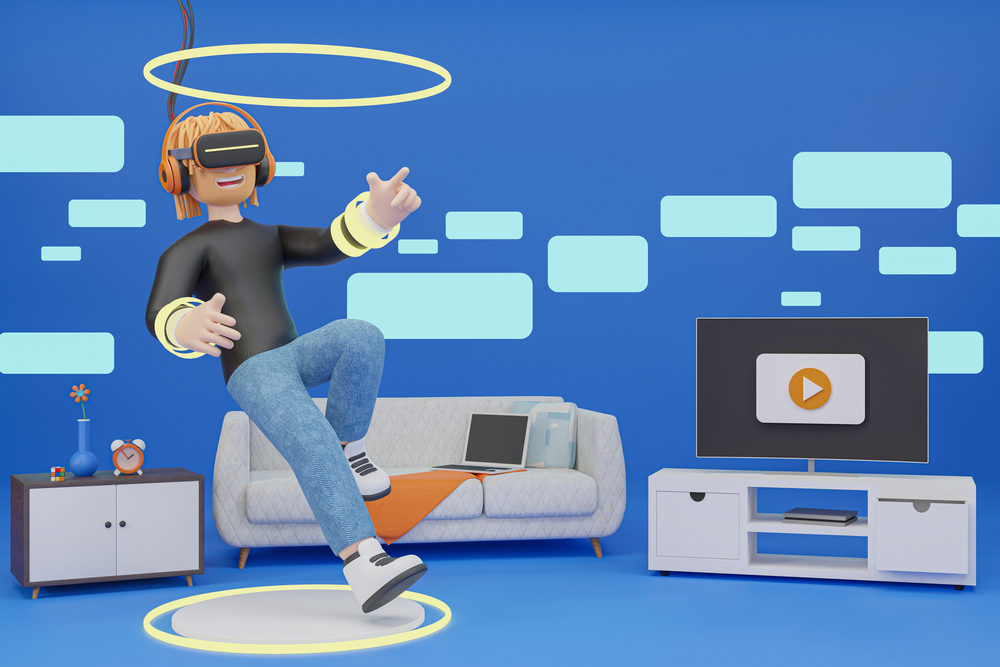How Interior Design Is Adapting To The Metaverse

The metaverse is one of the biggest technology trends shaping our future. It collapses the physical and virtual worlds, and is touted by Mark Zuckerberg as the “embodied internet” that will succeed the mobile internet era. Interior design is adapting to the metaverse, starting from the principle that homes must reflect their owners.
What is the Metaverse?
The term “metaverse” was first coined by Neal Stephenson in his 1992 book, Snow Crash. Although it is the basis of our understanding of the metaverse, there are a number of competing definitions of what it actually is.
Facebook’s reorganization as Meta popularized the idea, without leading to a definite concept of what it is. In Matthew Ball’s Metaverse Primer series, he saw seven qualities that determined what the metaverse is or will be:
- Persistence: It is always there
- It is live and synchronous: it will exist in real-time, parallel to the “real world”
- There will be no limit on the number of concurrent users. Each user will have a sense of “presence”, participating with agency in the metaverse alongside everyone else.
- It will have a full fledged economy in which people will be able to trade, be entrepreneurs, and get paid for work.
- It will collapse the gap between the digital and physical world. Open and closed platforms and private and public networks and experiences.
- Interoperability will go to the next level, encompassing digital assets, data and content, across your experience.
- Experiences and content created by individuals, groups and companies will populate the metaverse.
How Does Interior Design Fit Into the Metaverse?
Interior design companies are some of the experience and content creators whose work populates the metaverse, with digital assets such as top leather sofa brands, and other furniture items that can be used by users to make their metaverse experience more tailored to their individual style.
As we spend more time on this embodied internet, our craving for self-expression within that world will grow. Its fidelity to our inner world will be crucial to its success.
Legacy Russell’s book Glitch Feminism suggests a view of the metaverse as a space in which we can experiment with out identities and ourselves, testing out the possibilities and seeking out the bounds of out potentiality. The metaverse could be a place in which we create the human beings that we want to be.
The metaverse offers a space in which we can transcend the conflicts and binary worldviews of our existence and explore more fluid concepts and states of being. Through an avatar, we can take on a multiplicity of identities and iterate different existences.
Interior design has responded to this potential through efforts such as the Obsidian Virtual Concept House created by 25 Black Artists + Designers Guild (BADG) creatives in 2021. This Afrofuturist dwelling allowed users to shop for fixtures and products created by the concept house’s designers, as well as participate in a month of online programming. The goal of the concept house was to create a space for the expression of joy and creativity, with each part of the house designed to reflect the personal story of its designers.
Objects within the metaverse are fluid, just like their creators and those who interact with them. They transcend their own earthly limitations and are infinitely malleable. Zyva Studio, a Paris-based design studio, has explored the possibilities of creating for the metaverse. Many of the firm’s designs seem unearthly, as if designed for trans-humans and divine beings. Founder, Anthony Authié, coined the term, “trans-design” to express his feeling that his work was drawing from multiple planes, such as fiction and various subcultures.
The metaverse’s potential is probably best expressed in terms of French sociologist Jean Baudrillard’s notion of “hyperreality”, in which signs and representations lack an original referent. The metaverse makes it hard to distinguish between what is real and what is a simulation of reality.
This is so even if the metaverse allows the creation of a world completely different from reality. A world where things can bend and contort into unfathomable shapes and angles, where footballs taste like oranges, where mountains are made of sugar, and where the skin is as brittle as glass. The metaverse volatizes our concept of the world. Our idea of reality melts in the air. It is a space where our furniture can wink and smile at us.
Self-Expression through the Metaverse
The metaverse allows a fuller expression of our identity than may be possible in the real world, or at a time when you may not be ready to reveal your identity to the world. By treating identity as something fluid, it frees people to be more creative with their identities, to unshackle themselves from the tyranny of conformity and reach out to grab hold of a higher sense of themselves.
Misha Kahn, produced a design project, Misha Kahn: Furniture Unhinged, composed of 10 physical and digital pieces. These pieces are the first-ever design non-fungible token (NFT) sale offered by a major auction house, Christie’s.
NFTs are cryptographic tokens that are unique depictions of some real-world goods (furniture, audio, photos, etc) and which cannot be interchanged with other tokens.
Each of Mash’s 10 NFTs consist of a 3D model shown as an FBX file along with a corresponding MP4 single-channel video of the model spinning on a pedestal.
The project starts off with a 13-second animated video in which a biomorphic protagonist changes into different furniture types and acts within some virtual world beyond ours.
Unlike other NFT auctions, this one comes with the right to create as many 3D prints of the FBX as the owner wants, and/or the owner may ask Kahn to produce a unique rendering in PETG thermoplastic polyester, paint and epoxy.
Conclusion
The metaverse offers creators the chance to give users an embodied experience that will help them not only express their personality, but experiment with it and unleash their creativity as they iterate through various, liberated versions of themselves. Through interior design, a person may be able to grab hold of a version of themselves that they never thought possible.




